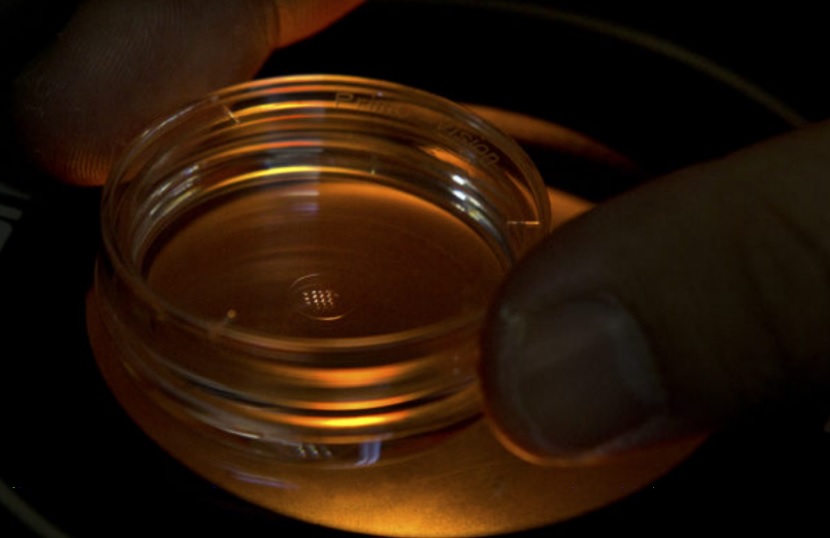By SHARON BEGLEY @sxbegle for STAT
DECEMBER 4, 2018
The email landed out of the blue. As Dr. Kiran Musunuru was scrolling through his inbox about a year ago, he found a message from a scientist identifying himself as a graduate student at Southern University of Science and Technology in China. It explained that the lab where the student worked had used CRISPR, the revolutionary genome editing tool, to disable a gene called PCSK9 in human embryos.
“Our results have shown that CRISPR/Cas9 technology can reach a high editing efficiency for PCSK9 gene in human and monkey embryos,” said the email. A naturally occurring mutation in the PCSK9 gene lowers levels of bad cholesterol to rock-bottom, so the Chinese group was studying whether it could accomplish the same thing with CRISPR. The student concluded: “Do you think it is reasonable and feasible?”
Musunuru offered little encouragement. “I’m not sure I have much technical advice to offer,” he replied, and forgot about the whole exchange.

Until last week: That’s when Chinese scientist He Jiankui shocked the world by announcing that he had used CRISPR genome editing to alter the DNA of IVF embryos and establish a pregnancy with them, leading to the birth last month of the world’s first CRISPR’d babies. A second pregnancy, using an unspecified number of gene-edited embryos, was in its early stages, He told the International Summit on Human Genome Editing in Hong Kong.
Scientists were stunned because editing the human germline — the genomes of embryos, eggs, and sperm — has been considered taboo or at least not ready for reproductive use, because such changes would be inherited by descendants. And CRISPR’s safety, including the potential for unintended health effects, remains very much unknown.
The birth announcement made Musunuru dig out his old emails — which he shared with STAT — and do some sleuthing. The University of Pennsylvania researcher quickly found that the student, Feifei Cheng, worked with He and presented a paper written with him at a meeting on genome editing this past April in China sponsored by Cold Spring Harbor Laboratory. That paper reported editing PCSK9 in human, monkey, and mouse embryos.
Re-reading the emails, Musunuru said he thinks it’s possible that embryos with the edited cholesterol gene were used in the second pregnancy. “It seems clear this PCSK9 work in human embryos goes back at least two years,” he said. “I think it’s possible that He’s group has implanted PCSK9-disrupted embryos, though I have no evidence it went that far. It was clearly in their plans, though.”
Since the Hong Kong announcement, Chinese authorities have denounced He, launched an investigation, and denied that he had been detained. (His whereabouts, however, are unknown.) Meanwhile, U.S. scientists have combed through their memories and their emails, checking whether He or anyone in his lab ever reached out to them. In several cases, they discovered, like Musunuru, that they had forgotten what were brief, but in retrospect troubling, interactions.
In April 2016, for instance, He wrote to CRISPR developer Feng Zhang of the Broad Institute of MIT and Harvard, identifying himself as CEO of a DNA sequencing company and requesting a lab tour. That didn’t happen, but He did briefly drop by this past August, Zhang told STAT, to discuss ways to make CRISPR more accurate. He never even hinted at the pregnancy underway by then. “By August, he must have been quite far along in his work in humans, at least according to his most recent claims,” Zhang said. “He certainly never mentioned this work when I saw him.”Related: UC Berkeley researcher, told of CRISPR’d baby study a year ago, warned scientist not to do it
Musunuru, a cardiologist who is now an associate professor at Penn’s Perelman School of Medicine, has for nearly five years studied CRISPR’s potential to treat diseases by altering the DNA of cells in children and adults (not embryos). He led a 2014 study on using CRISPR to edit PCSK9 in mice’s liver cells into the cholesterol-lowering variant. That approach — editing liver cells — could be used if CRISPR is ever developed for this purpose. Although Amgen’s Repatha and Sanofi/Regeneron’s Praluent, which block the receptor protein that the PCSK9 gene produces and thus achieve the same effect as disabling the gene, have been approved in the U.S. since 2015, both have been commercial flops and must be taken for life. Genome editing could potentially be a one-and-done treatment.
The first email from He’s student arrived Nov. 9, 2017. Cheng asked Musunuru for advice on using lab mice to prove that editing the cholesterol gene in human embryos was safe. Their next step was to assess the edits’ specificity in the embryos, meaning whether CRISPR had “off-target effects” — changing any DNA it wasn’t supposed to. The email mentioned Musunuru’s own PCSK9 research.
On Nov. 15, 2017, another email arrived from Cheng. It said, “I think our research will illustrate whether targeting PCSK9 genome editing in embryos, not in adult, is efficient and safe for the first time. This deserves our concern for the prevent and treatment of familial hypercholesterolemia and cardiovascular disease, and is also different from other related studies.”
The lab, Cheng added, was using “discarded human embryos.” There was no hint that He was contemplating establishing a pregnancy with CRISPR’d IVF embryos.Related: He took a crash course in bioethics. Then he created CRISPR babies
In January, Cheng emailed Musunuru again, asking for reagents (RNA and other molecules used for genome editing) to target PCSK9 in human embryos. “I will pay the delivery cost and try to seek for later cooperation,” Cheng wrote. Musunuru didn’t reply.
Then two months ago, Musunuru was asked by an international journal to peer-review a manuscript reporting the use of CRISPR-Cas9 to edit PCSK9 in mouse, monkey, and human embryos, with Cheng as first author and He as the last (or senior) author. (Musunuru declined to name the journal, since peer review is supposed to be confidential.) The technique seemed to be working, the scientists reported, with high efficiency and no detectable mutations in potential off-target sites.
The researchers did not report implanting the edited embryos to start a pregnancy. But Musunuru was bothered that there was no mention of the potential health consequences of knocking out PCSK9 in the germline. For instance, a 2017 study reported that the ultra-low-cholesterol version that He was making in human embryos raises the risk of type 2 diabetes by about 30 percent.
“It makes me sick to my stomach,” Musunuru said, that his research “probably motivated him to pursue PCSK9 in human embryos, possibly all the way to pregnancy.”



